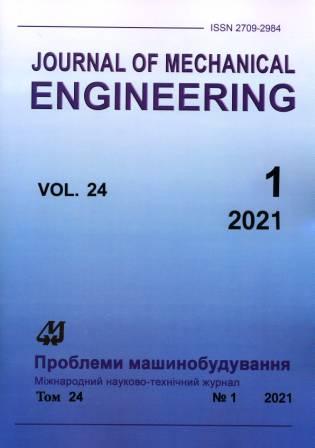Static Buckling of a Pre-loaded Complex Nano-composite Shell
Abstract
This paper describes a technique for analyzing the phenomenon of static buckling of a pre-loaded complex nano-composite shell. Most of the works devoted to the analysis of complex structures consider vibration processes, while the phenomenon of buckling can be an important factor that limits the use of new materials in space-rocket hardware. A nano-composite constant-thickness shell consisting of two spherical covers and a cylindrical body is considered. It is acted upon by internal pressure and an axial compressive force. This shell simulates the fuel tank of a launch vehicle. Conditions under which the shell is deformed non-axisymmetrically, buckling statically, are investigated. A technique is proposed that allows the problem to be divided into the analysis of the pre-loaded state of the shell and the analysis of buckling. Further analysis is performed using a technique based on the high-order shear deformation theory and the Ritz method. The problem is discretized by representing the variables that determine the state of the shell in the form of expansions in basis functions with unknown coefficients. Thus, it is the expansion coefficients that become unknown in the problem. The problem of analyzing the pre-stressed state of a structure is reduced to solving a system of linear algebraic equations with respect to the expansion coefficients. The problem of buckling analysis can be reduced to the problem of eigenvalues. The solution to this problem makes it possible to find the minimum value of the compressive load at which the shell buckles, as well as the forms of buckling. The results of applying the developed technique were compared with those of finite element modeling of a structure made of the simplest nano-composite material. The comparison results indicate a high accuracy of the technique described. At the same time, the use of the finite element method for the analysis of large-scale thin-walled structures made of functionally gradient materials is extremely difficult, in contrast to the methodology proposed in the paper. Comparison of various types of nano-reinforcement showed that a rational choice of the type of reinforcement can significantly increase the critical load. In this case, the internal pressure on the shell also significantly affects the critical load.
Downloads
Published
Issue
Section
License
Copyright (c) 2021 К. В. Аврамов, Н. Г. Сахно, Б. В. Успенский

This work is licensed under a Creative Commons Attribution-NoDerivatives 4.0 International License.
All authors agree with the following conditions:
- The authors reserve the right to claim authorship of their work and transfer to the journal the right of first publication of the work under the license agreement (the agreement).
- Authors have a right to conclude independently additional agreement on non-exclusive spreading the work in the form in which it was published by the jpurnal (for example, to place the work in institution repository or to publish as a part of a monograph), providing a link to the first publication of the work in this journal.
- Journal policy allows authors to place the manuscript in the Internet (for example, in the institution repository or on a personal web sites) both before its submission to the editorial board and during its editorial processing, as this ensures the productive scientific discussion and impact positively on the efficiency and dynamics of citation of published work (see The Effect of Open Access).

